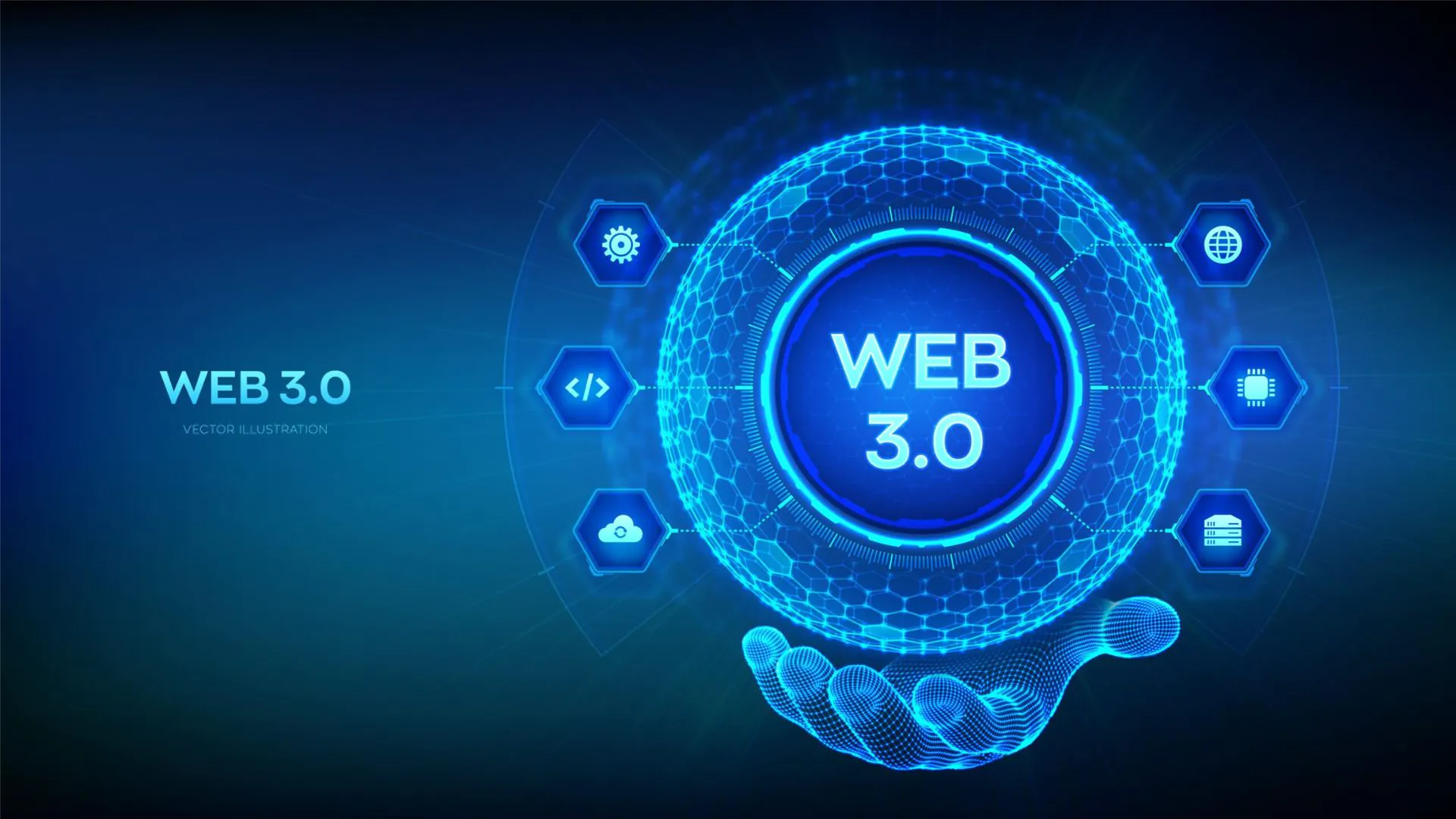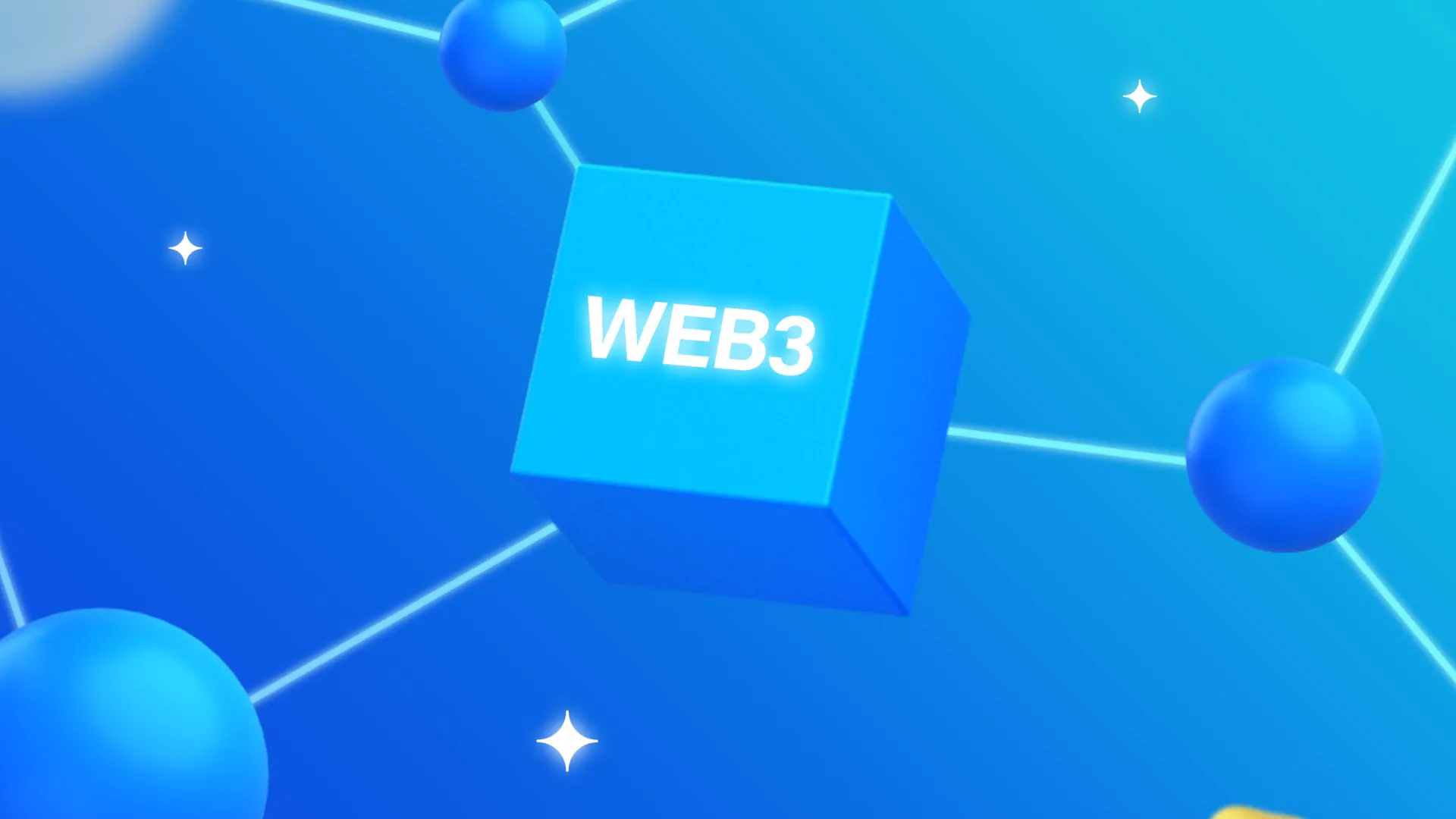In the 21st century, the continuous development of technology has unlocked numerous potentials for the Internet, with web platforms evolving gradually through different generations. We’ve witnessed the emergence of Web 1.0, Web 2.0, and now, the advent of Web 3.0, bringing forth various new applications in our lives. So, what exactly is Web3.0? Let’s delve into the article below from AZC.News to find the answers!
What is Web3?

Web3.0 is a term used to refer to decentralized Internet networks, where data isn’t stored on central servers but distributed across various nodes globally. Web3.0 promises greater independence, security, and personalization for users by eliminating reliance on traditional intermediary organizations and fostering a more automated online business and transaction environment.
In Web3.0, applications based on blockchain technology are commonly used to verify and record transactions publicly and immutably, thus enhancing transparency and ensuring data integrity. Services and applications in Web3.0 are often built on open and standardized protocols, facilitating easier development and integration.
Web3.0 represents a novel internet network trend, focusing on decentralization, transparency, and automation, opening up new potentials for how we interact online and conduct transactions on social networking platforms.
Development Phases of the Web

Web 1.0 (1989-2004)
During this phase, websites were primarily static documents, lacking interactivity with users. Interfaces were often simple, and design wasn’t a focal point. Content mainly comprised information and knowledge, with no media like images or videos. Search engines like Yahoo! and AltaVista gained popularity. The concept of social networking wasn’t developed, hence no social interaction as today. Web 1.0 laid the groundwork for subsequent versions.
Web 2.0 (2004 – present)
Web 2.0, a continuation of Web 1.0, introduced user interaction. It transformed the Internet into a platform for multimedia online applications, social networking sites, blogs, and other web services where users could interact and share content. Features like web-based applications (e.g., Gmail, Google Maps), social networking sites (e.g., Facebook, Twitter), and cloud technologies became prevalent. Web 2.0 thrived on user interaction, contribution, and content distribution, fostering the growth of online communities.
Web 3.0
Web 3.0 represents a new internet environment based on emerging technologies like blockchain, smart contracts, and distributed computing. Its emphasis lies on decentralization, security, and data ownership for users. In Web 3.0, users will have complete control over their data and its usage, rather than large tech companies controlling and exploiting this data.
Applications in Web 3.0 are often decentralized, where information is stored and processed across multiple nodes in the network, instead of being centralized on a single server. Blockchain and smart contracts are key technologies driving the development of Web 3.0, providing transparency and security for online transactions and creating a decentralized, safer internet environment.
Key Components of Web3

- Blockchain: A distributed database storing information across network nodes without a central point. Each data block in blockchain is linked to the previous one via encryption, creating an immutable chain, ensuring data immutability and enhancing transparency in online transactions.
- Smart Contracts: Self-executing computer programs containing contract terms written in code. They run automatically and cannot be altered once deployed on the blockchain. Smart contracts automate transaction processes and eliminate reliance on third parties.
- Distributed Computing: In Web 3.0, distributed computing is crucial, where computation and data storage are distributed across multiple nodes in the network. This eliminates dependence on central servers and creates a distributed and secure data environment.
- Privacy and Data Ownership: Web 3.0 places particular emphasis on user privacy and data ownership. Users have complete control over their personal data and how it’s used, rather than being controlled and exploited by large companies.
- Decentralized Applications (DApps): DApps are applications built and deployed on blockchain or distributed networks. They don’t require a central server and often have higher security and transparency compared to traditional applications. DApps provide independence and freedom for users to interact with online services.
Characteristics of Web3

- Decentralization: Web3 focuses on distributing ownership and control among individuals and organizations rather than centralizing power in a few large entities.
- Permissionless: People have the right to access and participate in Web3 without approval from any organization, fostering favorable conditions for development and innovation.
- Separate Payment System: Web3 uses cryptocurrencies as the primary means of payment, independent of traditional banking payment infrastructure.
- Trustless: Web3 builds on technologies and economic mechanisms rather than relying on trust in third parties, enhancing transparency and security.
- Artificial Intelligence (AI) and Machine Learning: Web3 utilizes technologies like Semantic Web and machine learning to understand and process information, providing a powerful and personalized online experience.
- Connectivity: Web3 facilitates easier access to information and data through various interconnected applications and devices, creating a strong and diverse connection environment.
- Open Source: Web3 applications are built as open-source, encouraging contributions from the community, programmers, and development groups, creating conditions for comprehensive development and creativity.
- Diversity: Web3 brings the Internet to everyone, everywhere, through IoT technology, opening up potential for smart applications and diverse connections.
Related: What is Play to Earn? Top 5 Well-Known Play to Earn Projects for Profitable Million-Dollar Earnings
Advantages and Disadvantages of Web3

Advantages
- Decentralization: Web3 eliminates dependence on intermediary organizations, creating a decentralized environment where power and control are more widely distributed.
- Security and Privacy: Using blockchain and data encryption enhances safety and security, preventing cyberattacks and information fraud.
- Transparency: Transactions recorded publicly on the blockchain create transparency and fairness, helping prevent fraud and corruption.
- Financial Potential: DeFi opens up new opportunities in finance, allowing people to access financial services without the intervention of intermediary organizations.
- Community Engagement: Web3 encourages community participation in network management and development, creating a fairer online environment.
Disadvantages
- Instability: Many new Web3 technologies are still in the development and testing phase, facing challenges regarding performance and stability.
- Energy Consumption: Some blockchain platforms consume a significant amount of energy for transactions, contributing to climate change issues.
- Accessibility: Currently, using and accessing Web3 is still quite challenging for ordinary users, especially those lacking technology knowledge.
- Security Issues: Despite blockchain’s perceived safety, there’s still a risk of attacks, especially 51% attacks and information vulnerabilities.
- Risk Management: Due to the volatile nature of the cryptocurrency market, investing and using DeFi can bring high returns but also high risks.
Future of Web3

Web3 is seen as the future of the Internet, creating a decentralized, transparent, and secure online environment. Web3 uses blockchain technology and other decentralized protocols to create applications and services that users can interact with without needing to trust a third-party intermediary.
Some future trends in Web3 include:
- Decentralized Platforms: Platforms like Ethereum, Polkadot, and Cosmos will continue to develop and expand, offering the ability to create a diverse range of decentralized applications.
- Digital Assets and NFTs: The popularity of digital assets and NFTs is expected to continue growing, opening up new opportunities in art, education, and e-commerce.
- DeFi Development: DeFi will continue to expand and diversify, providing widely accessible financial services without the intervention of intermediary organizations.
- Security and Privacy: Web3 will continue to focus on improving security and privacy, especially in handling personal and financial data.
- Decentralized Networks: The development of decentralized networks will help minimize dependence on traditional service providers and enhance the diversity and scalability of the Internet.
However, there are also challenges and issues to address in deploying Web3, including scalability, interoperability, and risk management. This requires collaboration between developers, businesses, and regulatory bodies to ensure that Web3 develops in a sustainable and beneficial direction for everyone.
4 Potential Coins of Web3 to Consider

- Ethereum (ETH): Ethereum is not only a cryptocurrency but also a popular platform for developing decentralized applications and smart contracts. With the advent of Ethereum 2.0, addressing transaction fee issues and scalability, Ethereum continues to be considered one of the potential platforms for Web3.
- Polkadot (DOT): Polkadot is a blockchain platform built to connect multiple individual blockchains into one large ecosystem. Founded by Gavin Wood, one of the co-founders of Ethereum, Polkadot has garnered significant attention from the community and is seen as a potential project in the Web3 field.
- Chainlink (LINK): Chainlink is a project providing solutions between smart contracts and off-chain data through “Oracles”. Playing a vital role in connecting blockchain projects with off-chain data and the real world, Chainlink is considered one of the promising projects in the Web3 industry.
- Filecoin (FIL): Filecoin is a decentralized storage platform based on blockchain, allowing users to buy and sell storage services and access data. With a large ecosystem and potential to promote decentralized storage and data management, Filecoin is considered one of the promising coins in the Web3 field.
Conclusion
Web3 is not just a significant step in the development of the Internet but also a great opportunity for innovation and business growth. By eliminating reliance on intermediaries and creating a decentralized environment, Web3 is opening up new potentials for a more interactive, secure, and transparent Internet than ever before.
 OMN
OMN  BTC
BTC  ETH
ETH  USDT
USDT  XRP
XRP  BNB
BNB  SOL
SOL  USDC
USDC  TRX
TRX  DOGE
DOGE 






Terimakasih informasinya, sangat bermanfaat sekali.
Great job 👍
Good
👍
Well interesting and educative especially to the beginners , it will hell them to understand blockchain technology primarily